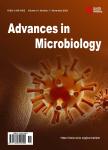Effect of a Commercial Extract of Green Tea and a Pure Catechin on Two Veillonella strains
Effect of a Commercial Extract of Green Tea and a Pure Catechin on Two Veillonella strains作者机构:Centro de Deteccin Biomolecular Benemrita Universidad Autnoma de Puebla Puebla Mexico Facultad de Estomatologa Puebla Mexico
出 版 物:《Advances in Microbiology》 (微生物学(英文))
年 卷 期:2024年第14卷第6期
页 面:340-350页
学科分类:1002[医学-临床医学] 100214[医学-肿瘤学] 10[医学]
主 题:Veillonella Parvulla Chlorhexidine Green Tea Catechin
摘 要:The catechin Epigallocatechin-3-O-Gallate (EGCG) which is found in of Green Tea extracts (GTE), displays a variety of microbicidal properties. It is largely believed that EGCG inhibits the growth of cariogenic and periodontopathic bacteria. Objective: In this paper we compared the inhibitory activity of EGCG and a commercial GTE on the growth of Veillonella parvula. Chlorhexidine was used as positive control. Methodology: V. parvula ATCC 10790 and a clinical isolate obtained from a periodontal disease patient were cultured in the presence of EGCG or a commercial GTE, and the measurements of bacterial growth inhibition were compared to the values obtained with 0.12 and 0.2% chlorhexidine. Results: Chlorhexidine inhibited bacterial growth, however in contrast to a previous report, neither EGCG nor the GTE showed any effect on bacterial growth. Conclusions: The data show and confirm that chlorhexidine is a growth inhibitor of V. parvula while EGCG and GTE do not display such effect.



